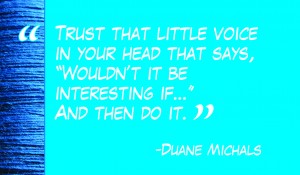Let’s talk about business cards, shall we?
It’s true that a lot of business is done electronically, these days, and it’s not like we pay polite visits that require calling cards anymore. (Though, let’s pause a moment and reflect on a society that used to have time to ramble from house to house on any given morning, leaving a bread crumb trail of finely printed cardboard behind to mark each stop.)
No, these days, we’re busy. Time is of the essence and some days, we’re lucky to send a text message. And besides … business cards? Isn’t there an app for that? Just a swipe on your smart phone’s screen and, poof, your information is beamed across the airwaves to a new colleague or friend? Nobody carries paper anymore!
Except, that’s not true.
Business cards can provide lots of services for the 21st century.
- They’re solid. As much as “digital” is all the rage, there’s a lot to be said for a solid, three-dimensional reminder that you, your website, your company exist. A digital connection might be handy, but it’s easier to forget, once it’s saved to the hard-drive or the cloud.
- They’re informative. All that information you want people to have is right there.
- They’re suggestive. A person’s business card can say a lot about them. Depending on the colors, graphics and fonts, you choose, I should be able to get an immediate “feel” for the kind of person you are (or that you want me to think you are). Is your card “all business” or is it more playful? Does it show your creative side? Is it colorful? Are the fonts serious or whimsical?
- They’re unique. Just like you are, nobody is going to have a card exactly like yours. Or, well, this may not be strictly true for corporate cards where they are exactly the same for everyone from the CEO downward except for the names and titles, but if there’s any personal choice involved at all, your card will be as one-of-a-kind as you are.

Now, obviously, if you’re a serious person with a serious company or agenda and you’re going about your serious business, you’re not going to pick a business card design that has clowns doing the can-can across the top. A lawyer probably won’t pick the comedy/tragedy masks as an icon (unless they happen to be a lawyer with a macabre sense of humor). A 20-year old artist is unlikely to have a card that looks anything like their investment banker father, ever.
Because this is where business cards — especially “personal” business cards — really shine. They give you a chance to follow up a really good first impression with something that reflects that sparkling personality of yours. Even better, it gives them all the information they need to get back in touch with you.
What kind of information should be on your business cards? That depends.
- Your name
- Your phone number (cell, home, or business — or any combination of the three)
Your email
These three things are the bare minimum. If you want people to be able to contact you, you need to at least give them your name, your number, and your email.
What else? Well, this is where things start coming down to choice
- Your Title. It’s good to remind people of who and what you are. If you’re just one of dozens of people who handed them a card today, you want them to remember that you’re the person who walks dogs on pogo sticks or that writes the great ad copy. And, of course, if you’ve got a title, you should use it. (If you’ve got it, flaunt it.)
- Your Skill/Talent. Slightly different than a Title. A title is usually something formal inside a company (e.g., Founder, Marketing Director, V.P.), but if you’re self-employed or simply marketing yourself, you might not have anything so formal. But that doesn’t mean you shouldn’t be proud to put “Writer” or “Designer” … or even “Tight-Rope Walker.” Again, you want people to remember who you are when they see the card
- …Or Not. Or maybe you don’t want to limit yourself to one thing. If your card says “Writer” and you’re handing it to someone you’ve just been telling about your graphic design skills, they might be confused. It’s your call, but you may not want to label yourself.
- Your Website. If you’ve got it, you’ll probably want to people to see it. This includes company websites, relevant blogs, digital portfolios … anything online that you want people to know about.
- Your Address. Only if it’s your business address and you want people to come to your office. As a rule, you usually want to discourage near-strangers from showing up at your home
- Your Fax Number. If you still have one, feel free to provide it, but … these days? Not really that necessary
- Your Social Media ID. Depending on how you plan on using your cards, you might want to provide your Twitter or Facebook IDs, or how you can be found on LinkedIn or any other social network site of your choice. (If you’re a knitter, for example, provide your Ravelry ID.) Be prepared, though. If you spend all of your Facebook time talking about your cat, you might want to thnk twice before deliberately sending potential business associates there.
- Your tagline.. Do you have a slogan or quote you like? Something you use to promote yourself or your business? Feel free to add it to your card
Okay, so you’ve got the details set. What other considerations are there?
- Your Space. One thing people often forget — people like to write on business cards. They might jot down where they met you, or a reminder about the meeting you just set up. You might want to provide your personal number, or another contact for them to call — in which case they’ll need to use your name when they make that call. If you’ve covered every square centimeter of your card with text and graphics, there won’t be any room for notes.
- Your Personality. Like I said earlier, a business card is a great place to let some of you to shine through. Don’t go overboard, but choose colors, fonts, and graphics that hint at who you are, and what you can do for them. Would a building contractor put pink flowers on his card? Probably not, but an interior designer specializing in children’s rooms might.
- Your Details. Don’t forget — the whole point of the card is to let people find you. If they can’t read the text, you’ve wasted your opportunity. Make sure the text is big enough and/or in a clear enough font to read, that the background isn’t too busy, that the layout makes it easy to find things. Keep it simple.
- Your Details II. Also, DO make sure that the information you provide is correct. Don’t send people to old cell phone numbers or to websites that aren’t set up! If their email bounces back, you’ve lost all credibility right off the bat.
- Your Creativity. How can you make your card stand out from the pack? Can you can make it useful, say, by putting a ruler along one edge? Can you make it beautiful with a great photograph? How about something clever? My current set has my contact information on one side, but the back has Duane Michals’ quote: “Trust that little voice in your head that says, ‘Wouldn’t it be interesting if…’ and then do it.”. I know at least one person who has one of my cards stuck to her computer monitor … which means my information is right at her fingertips if she ever needs me. She might not flip it over often (or ever), but still … MY card didn’t get thrown away the day I gave it to her.
Ultimately, I think business cards can be incredibly useful — and fun.
And why not? When passing out business cards, you take your victories where you can.
So, tell me … what else do you need for a good business card?

